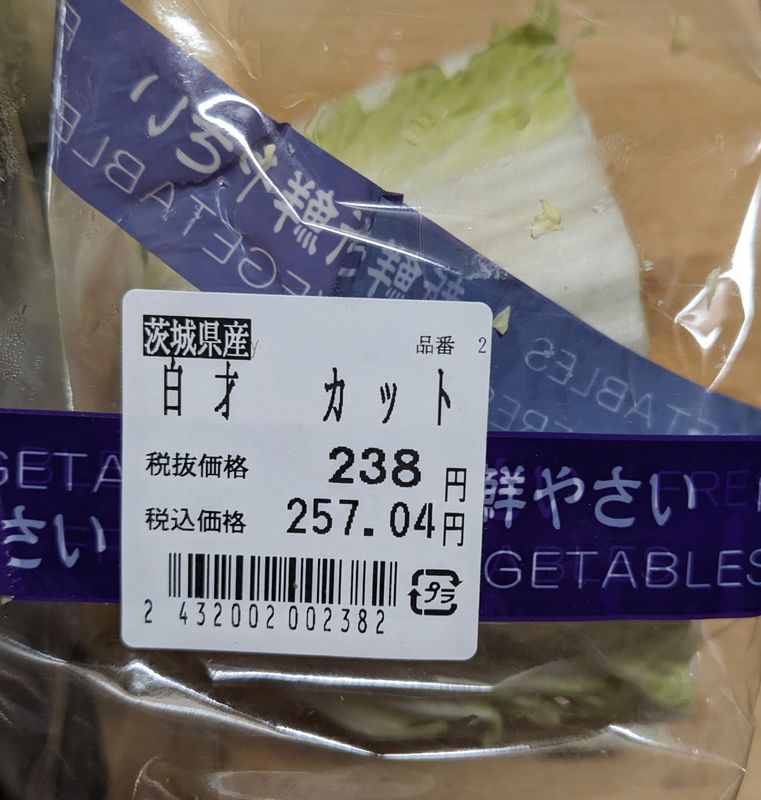Feb 4, 2025
White Leafy Veg / Age

While making dinner I actually looked at this label, because I didn't check it in the store. I mean I can look at the vegetable and know what it is (白菜).
The way it is written (白才) made me laugh, but also wonder if someone made a mistake.
So I asked the internet (in Japanese).
It seems that writing hakusai that way in Kansai isn't so unusual, although it isn't correct either. It's not used much anymore, but the dialect used to be shirona for hakusai, which would be written with the same kanji either way.
If it is hand written, someone suggested the second sai has fewer strokes so it's easier to write, but the correct sai is not difficult to the average elementary school student. The reasoning was kind of, well, everyone can still read it.
It seems like there has to be a better explanation for why it would be written that way.
One commenter in Kanto said they had seen garlic (nin niku) labeled as “人肉” which in context I could understand... I think someone has a weird sense of humor because that's actually pronounced “jin niku” and means human flesh, as in cannibalism.
Maybe this is the Japanese version of Engrish, so I'm entertained.
Do you even try reading the labels or signs in stores? Notice any other different ways of writing things?



0 Comments